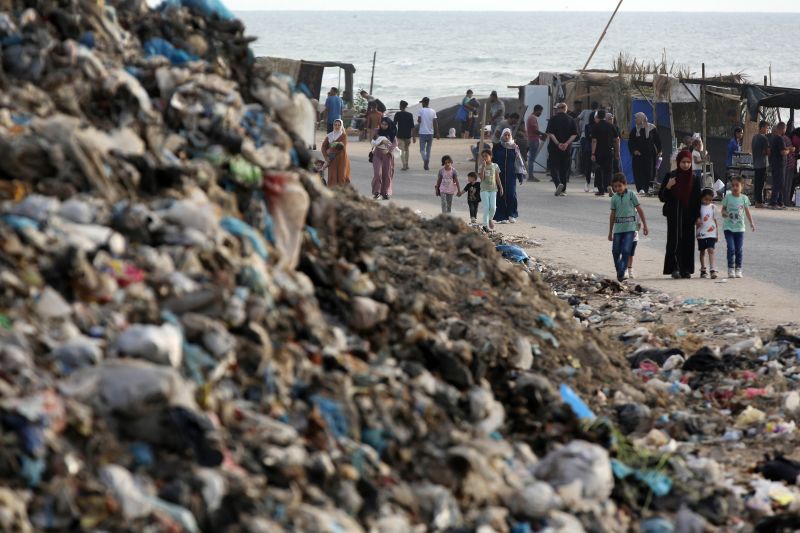
Gaza’s Health Crisis Looms: The Lurking Menace of Flies, Mosquitoes and Mountains of Garbage!
The continuous blockade of the Gaza Strip has led to a significant decline in the region’s infrastructure and public health. The extreme living conditions, due to political strife and conflict, have been exacerbated by the intensifying issue of vermin infestations, including flies and mosquitoes, and the overwhelming quantities of unprocessed waste. These factors, coupled with the prevalence of untreated sewage, pose a severe health risk to the Gaza populace, inevitably worsening the existing health crisis that the region has been grappling with for years.
To begin with, the overwhelming increase in flies and mosquitoes in Gaza is no coincidence. The collapse in sanitation facilities, due to the extended embargo, has resulted in large-scale breeding grounds for these pests. The result is not just a mere nuisance for the residents; these insects, in fact, carry a plethora of disease and pathogens. Mosquitoes are notorious vectors for illnesses such as Malaria, Dengue fever, and West Nile virus, all with potential fatal outcomes. Flies, on the other hand, are known to carry over 100 pathogens, causing diseases like Cholera, Tuberculosis, and Typhoid. The outbreak of such diseases when health facilities are already inadequate, force the inhabitants into a life-threatening situation.
Additionally, the issue of raw sewage further worsens the health risks in Gaza. With the sewage infrastructure in dilapidation due to lack of maintenance and war damage, many residents have no choice but to allow raw sewage to flow into the streets and, in particular, into the Mediterranean Sea. This not only ruins the coastal waters, destroying marine life and ecosystems with high levels of pollution, but it also causes sewage-related diseases. Most notably, the risks of Hepatitis A, Polio, and E. coli infections rise drastically, further straining Gaza’s already fragilized healthcare system.
Mountains of garbage in the streets of Gaza pose another severe public health threat. Restricted access to resources because of the blockade has greatly impacted the region’s waste management capabilities. Landfills are overflowing, and the waste collection is sporadic at best, causing the accumulation of huge quantities of garbage. These mounds serve as another viable breeding ground for vermin, escalating the pest infestation. Moreover, they expose the population to toxins and hazardous materials that are often mixed with household garbage, consequently leading to various diseases and conditions such as respiratory ailments, gastrointestinal disorders, and skin conditions.
Furthermore, these heaps of unprocessed trash disrupt the normal functioning of society. They block roadways, limiting access for emergency and medical services, and making it even harder for the populace to receive much-needed healthcare in a timely manner. And while the physical health risks of these waste mountains are apparent, it’s essential not to understate the impact on mental health. The constant sight of mountains of garbage can cause severe stress and anxiety – mental health problems that are often overlooked amidst more immediate physical health threats.
In conclusion, the health crisis in Gaza is a deeply complex issue, with the blockade and resulting infrastructure collapse at its core. The combined threats from the enormous presence of flies, mosquitoes, untreated sewage, and heaps of garbage serve to perpetuate an already dire situation. Addressing these challenges is a significant step toward relieving the immense strain on the region’s healthcare system and improving the overall quality of life for Gaza’s residents.
